DAY 15, MAY 20, Friday:
Columbus monument, Montjuic Castle, Poble Espanyol / Pueblo Español (Spanish Village) , National Art Museum of Catalunya - MNAC, Magic Fountain
Plaça de Catalunya
This square is 300 m walk from our apt and has 2 metro lines.
It is a large square in central Barcelona that is both its city centre and the place where the old city (see Barri Gòtic and Raval, in Ciutat Vella) and the 19th century-built Eixample meet.
Some of the city's most important streets and avenues meet at Plaça Catalunya: Passeig de Gràcia, Rambla de Catalunya, La Rambla, and Portal de l'Àngel, in addition to Ronda de Sant Pere, Carrer de Vergara, and Carrer de Pelai. The plaza occupies an area of about 50,000 square metres. It is especially known for its fountains and statues, its proximity to some of Barcelona's most popular attractions. The square played a significant part in the Spanish Civil War, in particular as a site of key events of the May Days.
YES, the metro station is this deserted when we start early...
COMBO TRIP ALL ON ONE TICKET
Our plan was to go up to the Parc de Montjuïc, located on the mountain to see the Castle there and admire the views over the city.
It can all be done on 1 metro ticket... go up to Paral·lel metro station and then take the funicular to the mountain and then on bus 150 to the castle.
We decided to get down at the station Drassanas before Paral·lel, see the Columbus monument and then get on back. This is also counted as part of the same journey. When we swipe the travel card, money won't get pulled out.
Relevant stations are circled in red at the bottom of the map below
We started off the trip at Pkaza Catalunya.
It is a 60 m (197 ft) tall monument to Christopher Columbus at the lower end of La Rambla. At the very top of the monument stands a 7.2 m (24 ft) tall bronze statue pointing to the sea atop a 40 m (131 ft) tall Corinthian column
The column, hung with a device bearing an anchor, stands on an octagonal pedestal from which four bronze winged victories or Phemes take flight towards the four corners of the world, above paired griffins. Four buttresses against the octagonal pedestal bear portrait medallions that depict persons related to Columbus
The base of the monument is a 20 m (66 ft) wide circle, with four staircases. Each staircase is flanked by two lions.
At the end of the 19th century, the building was used as a prison. In 1940, the President of the Generalitat of Catalonia, Lluís Companys, was shot dead, and in 1963 Franco inaugurated a Military Museum, which closed permanently in 2009. Currently, Montjuïc Castle is owned by the City Council from Barcelona.
The access bridge and the façade were designed by Cermeño in 1751 for the purpose of defense
COLUMBUS MONUMENT
As planned we got out and saw the monument
It was constructed for the Exposición Universal de Barcelona (1888) in honor of Columbus' first voyage to the Americas. The monument serves as a reminder that Christopher Columbus reported to Queen Isabella I and King Ferdinand V in Barcelona after his first trip to the new continentIt is a 60 m (197 ft) tall monument to Christopher Columbus at the lower end of La Rambla. At the very top of the monument stands a 7.2 m (24 ft) tall bronze statue pointing to the sea atop a 40 m (131 ft) tall Corinthian column
The column, hung with a device bearing an anchor, stands on an octagonal pedestal from which four bronze winged victories or Phemes take flight towards the four corners of the world, above paired griffins. Four buttresses against the octagonal pedestal bear portrait medallions that depict persons related to Columbus
Seated against the buttresses are four figures that represent four realms of Spain: the Principality of Catalonia, and the kingdoms of León, Aragon, and Castile.
Against the base of the pedestal between the buttresses are four additional statues: The canted octagonal plinth is inset with eight bronze bas-relief panels that depict important scenes in Columbus's first voyage to the Americas:
The base of the monument is a 20 m (66 ft) wide circle, with four staircases. Each staircase is flanked by two lions.

The funicular
Got a little confused after disembarking from the funicular, crossed the road, saw BUS 150 on the other side, ran back and caught it.Had a pleasant ride and reached the Castle.
MONTJUIC CASTLE
At the top of Montjuïc mountain, at a height of 173 meters, stands a building, named Castell de Montjuïc. It is an ideal enclave for defense, with 360º views of the territory. During the Reapers' War, in 1640, the first fortress was built, which has survived to this day.
The access bridge and the façade were designed by Cermeño in 1751 for the purpose of defense
The terrace and watchtower
Sagrada Familia
Then we took the BUS 150 back and got down at Poble Espanyol / Pueblo Español
Poble Espanyol / Pueblo Español
The Poble Espanyol was built for the 1929 International Exhibition to showcase Spain. It was supposed to be demolished after the Exhibition, but there was wide popular support to keep it intact because it was so charming and a good tourist attraction. The builders of the village were the architects Ramon Reventós and Francesc Folguera, while the artists were Xavier Nogués and Miquel Utrillo. Before the building of the village, the four made may trips around Spain to take photographs and get ideas. They took many notes and made many drawings. The four visited 1600 towns and villages in Spain!
OUR EXPERIENCE:
The Monastery eas not accessible, the Plaza Mejor was cordones off for some event, most of the shops were closed. We also did not see the Star wars experience mentioned at the entrance. The entrance fee of 14 euros was too steep for what we saw.
ARTESENAL CHOCOLATES
The South [Andalusian provinces]:
This space, dedicated mainly to the Andalusian provinces, serves as a beautiful contrast to the rest of the area. Narrow, winding, cobbled streets, white facades with blue flower pots replete with geraniums and a typical Cordoba patio are some of the characteristics of this area, where you can find the Plazuela del Carmen and Virgen de los Faroles.

BRONZE KNOBS

PLAZA ARAGONESA
Plaza Aragonesa [Aragonese Square]: Dominated by the imposing Utebo Tower, this is the other large square in Poble Espanyol. The mudéjar style of its construction is a clear artistic reflection of the combination of Christian and Muslim religions. This is without a doubt one of the unique elements of the peninsula’s culture and Spanish architecture.
Situated on Montjuïc hill at the end of Avinguda de la Reina Maria Cristina, near Pl Espanya, the museum is notable for its collection of romanesque church paintings, and for Catalan art and design from the late 19th and early 20th centuries
IVORY BOXES
GOLD
the fountain also works in ornamental mode, Tuesdays to Saturdays, from 11 am to 1 pm, and from 4 pm to 6 pm, and on Sundays, from 11 am to 3 pm
We went back to our apt, had our food. Then son took the metro back after 8.30 and enjoyed the light-music show
Report continuesUMBRELLA CANOPY
PLAZA MAYOR
Museu Nacional d'Art de Catalunya
We rook the metro to Plaza Espanya and walked to the museum
Plaça d'Espanya
The Plaça d'Espanya is located at the junction of several major streets:
Plaça d'Espanya (Plaza de España in Spanish) is one of the most important squares in Barcelona and sits at the foot of Montjuïc. It was built for the 1929 International Exhibition. two Venetian towers that are 47 meters tall were the gateway to the grounds of the International Exhibition. They were inspired by the Campanile of San Marco in Venice.
There is also a monumental fountain . It has three large columns and several sculptural groups . The monument is a homage to water, and each sculptural group represents the seas and oceans that wash the coasts of Spain.
The Mediterranean and Ebro river is represented with a young man surrounded by youths. The Atlantic Ocean and the Tajo and Guadalquivir Rivers are represented with two old men surrounded by youths. The Cantabric Sea shows a group of youths, which represent the rivers that flow into this sea. The three columns represent Religion, the Arts, and Heroism.
IVORY BOXES
GOLD
MAGIC FOUNTAIN
The International Exhibition in Barcelona took place in 1929 and the Magic Fountain was designed by an engineer and chief of the electromechanical installations section of the Exhibition. Buigas had a very original thought, which was to change the shapes of its jets of water.
Over 3000 men worked on the huge project. This project was completed and the cascades and fountains were installed in several places along the Avenida Maria Cristina. The main feature was the monumental fountain on the platform built just below the National Palace.
The Magic Fountain has a show of moving water jets that are illuminated in many different colors and shades. The water jets are synchronized with the music Before the 1992 Olympic Games, the fountain was restored to be ready for the Games.
The Magic Fountain is the biggest ornamental fountain in Barcelona, and it uses recycled water to conserve on drinking water. This was probably the first synchronized water, light, and music show in the world
. This giant fountain has 3620 water jets within its 3.1 million litre pool. Each of its fountain show lasts 20 minutes and it runs every 10 mins.
the fountain also works in ornamental mode, Tuesdays to Saturdays, from 11 am to 1 pm, and from 4 pm to 6 pm, and on Sundays, from 11 am to 3 pm
We went back to our apt, had our food. Then son took the metro back after 8.30 and enjoyed the light-music show


























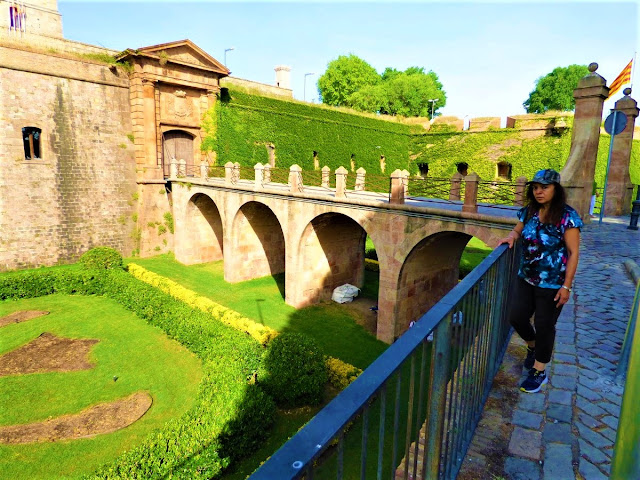

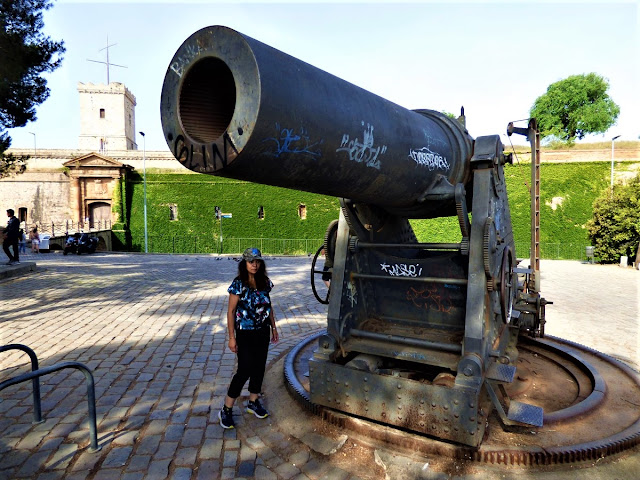













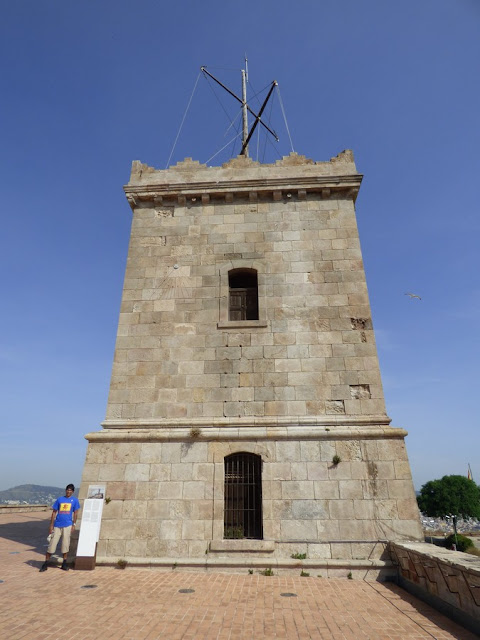






























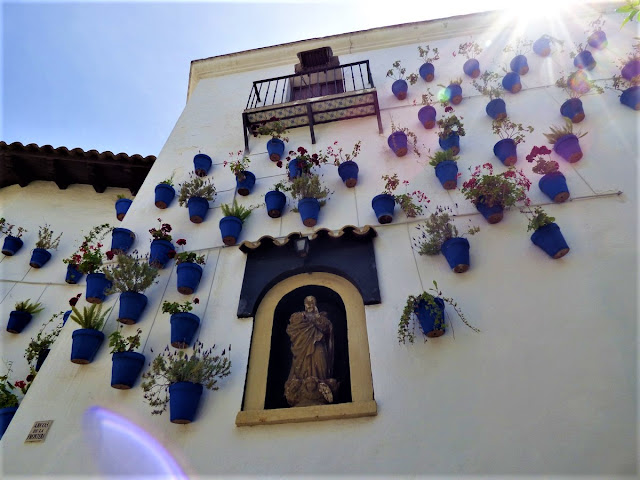
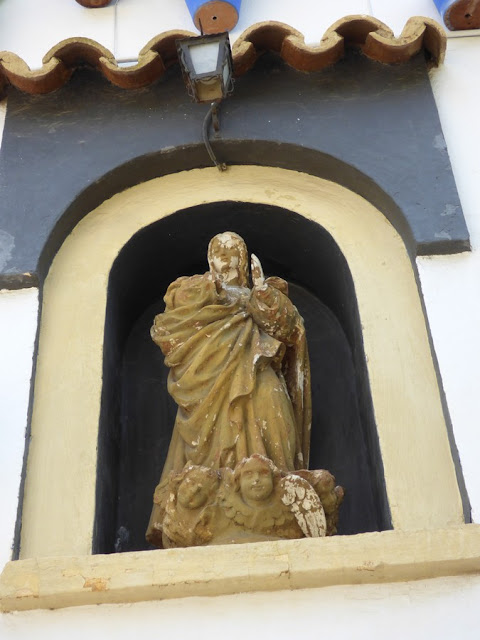
























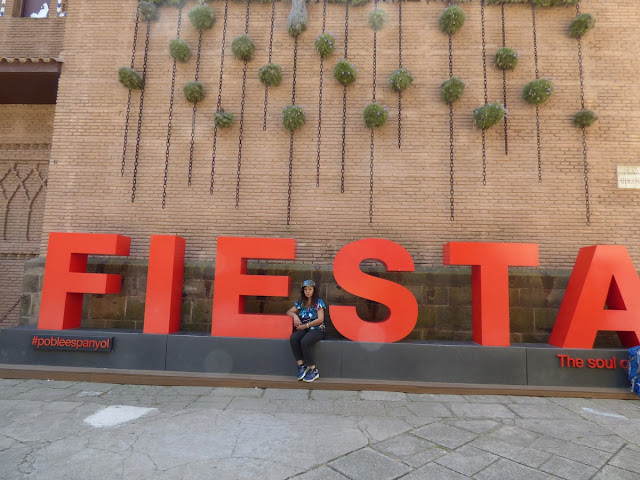















































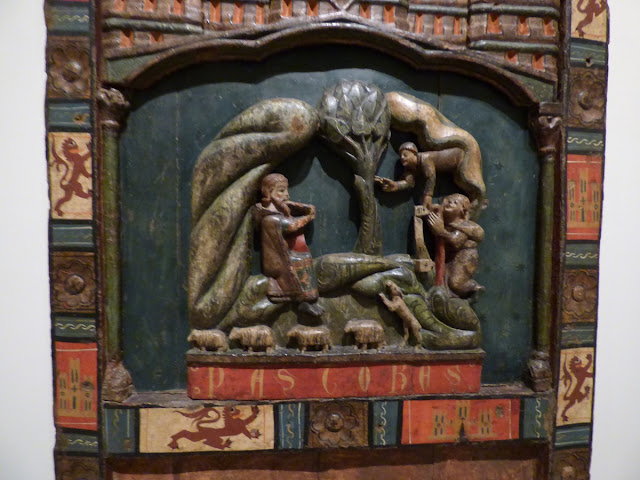












































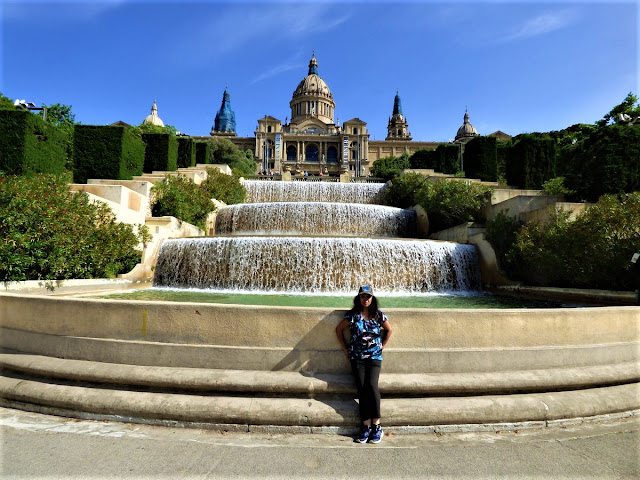











No comments:
Post a Comment